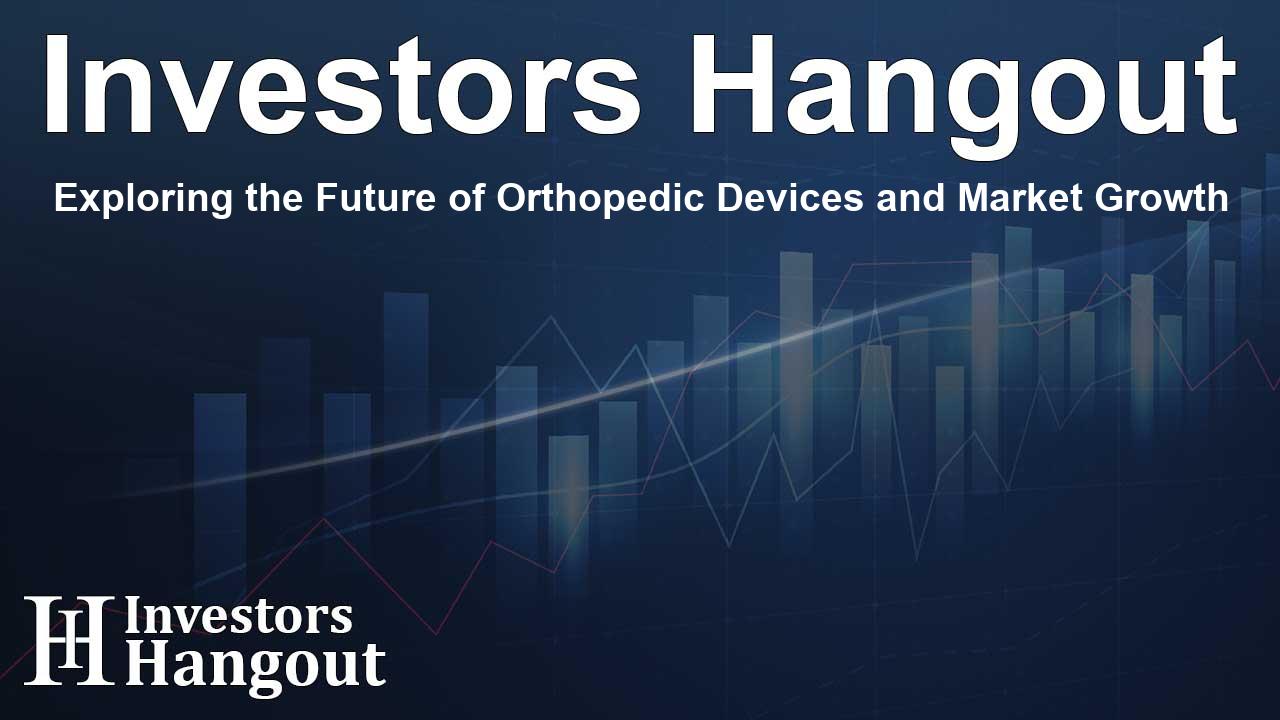Exploring the Future of Orthopedic Devices and Market Growth

Orthopedic Devices Market Overview
The global orthopedic devices market is on a growth trajectory, with forecasts estimating it will reach around USD 89.60 billion in the near future. Currently valued at approximately USD 60 billion, the market is expected to expand at a compound annual growth rate (CAGR) of 4.5%. This momentum is largely attributed to advancements in technology and the rising prevalence of musculoskeletal disorders, particularly among the aging population.
Significant Drivers of Growth
Musculoskeletal Disorders and Aging Population
Musculoskeletal disorders, including conditions such as osteoarthritis and rheumatoid arthritis, are becoming increasingly common, prompting a rising demand for orthopedic interventions. The World Health Organization identifies these disorders as a leading cause of disability globally, with around 1.71 billion individuals affected. As our population ages, the demand for effective orthopedic solutions—which improve mobility and enhance quality of life—grows stronger.
Technological Innovations
Technological advancements play a pivotal role in the orthopedic devices market's growth. Breakthroughs in areas such as 3D printing, robotics, and minimally invasive procedures are transforming the landscape of orthopedic surgeries. For instance, the integration of robotics in these operations ensures more precise implant placements, thereby decreasing the risks involved and resulting in better long-term patient outcomes.
Market Segmentation
Product Types
The orthopedic devices market is segmented into various product categories, prominently featuring joint reconstruction devices. These include hip, knee, and shoulder replacements, and they dominate the market due to a high incidence of osteoarthritis. Spinal devices are witnessing significant growth owing to increasing cases of spinal disorders combined with innovations in surgical technology.
Materials Used in Devices
The choice of materials for orthopedic devices significantly impacts their effectiveness. Common materials include metals such as titanium and stainless steel, polymers like PEEK and UHMWPE, and ceramics such as alumina and zirconia. Each material offers unique benefits regarding durability and bio-compatibility, influencing the overall performance and success of these devices.
Regional Insights
Geographically, North America holds a commanding lead in the orthopedic devices market, credited to its robust healthcare system, advanced technological adoption, and an array of prominent market players. Furthermore, the high prevalence of obesity and an aging demographic in the region amplify the need for orthopedic solutions. Europe follows as the second-largest market, buoyed by similar health issues.
Recent Trends and Developments
Recent years have witnessed several significant developments within the orthopedic devices landscape. Companies are actively engaging in mergers, collaborations, and innovative product launches. Notably, a key player recently introduced the RI.HIP NAVIGATION system, an advanced technology aimed at refining the precision of hip replacement surgeries. Additionally, the adoption of artificial intelligence and machine learning technologies in orthopedic procedures is reshaping diagnostic capabilities and enhancing personalized treatment approaches.
Looking Ahead: Market Projections
The orthopedic devices market holds tremendous promise as it continues to evolve. Projections indicate that it will reach USD 89.60 billion by 2032, driven by both technological advancements and shifting demographics, particularly the increasing number of elderly individuals. As healthcare systems adapt to these trends, orthopedic solutions will be a vital focus area for enhancing patient care and outcomes.
Frequently Asked Questions
What is the anticipated growth rate of the orthopedic devices market?
The orthopedic devices market is projected to grow at a CAGR of 4.5% until 2032.
What are the key factors driving the market growth?
Key factors include the rising incidence of musculoskeletal disorders and advancements in orthopedic device technologies.
Which regions are leading in market share?
North America currently dominates the orthopedic devices market, followed by Europe.
What technological innovations are influencing the industry?
Innovations like 3D printing, robotics, and personalized medicine are significantly shaping the orthopedic market.
What types of products are most common in the market?
Joint reconstruction devices, such as hip and knee implants, are the most prevalent product types in this market.
About Investors Hangout
Investors Hangout is a leading online stock forum for financial discussion and learning, offering a wide range of free tools and resources. It draws in traders of all levels, who exchange market knowledge, investigate trading tactics, and keep an eye on industry developments in real time. Featuring financial articles, stock message boards, quotes, charts, company profiles, and live news updates. Through cooperative learning and a wealth of informational resources, it helps users from novices creating their first portfolios to experts honing their techniques. Join Investors Hangout today: https://investorshangout.com/
Disclaimer: The content of this article is solely for general informational purposes only; it does not represent legal, financial, or investment advice. Investors Hangout does not offer financial advice; the author is not a licensed financial advisor. Consult a qualified advisor before making any financial or investment decisions based on this article. The author's interpretation of publicly available data shapes the opinions presented here; as a result, they should not be taken as advice to purchase, sell, or hold any securities mentioned or any other investments. The author does not guarantee the accuracy, completeness, or timeliness of any material, providing it "as is." Information and market conditions may change; past performance is not indicative of future outcomes. If any of the material offered here is inaccurate, please contact us for corrections.